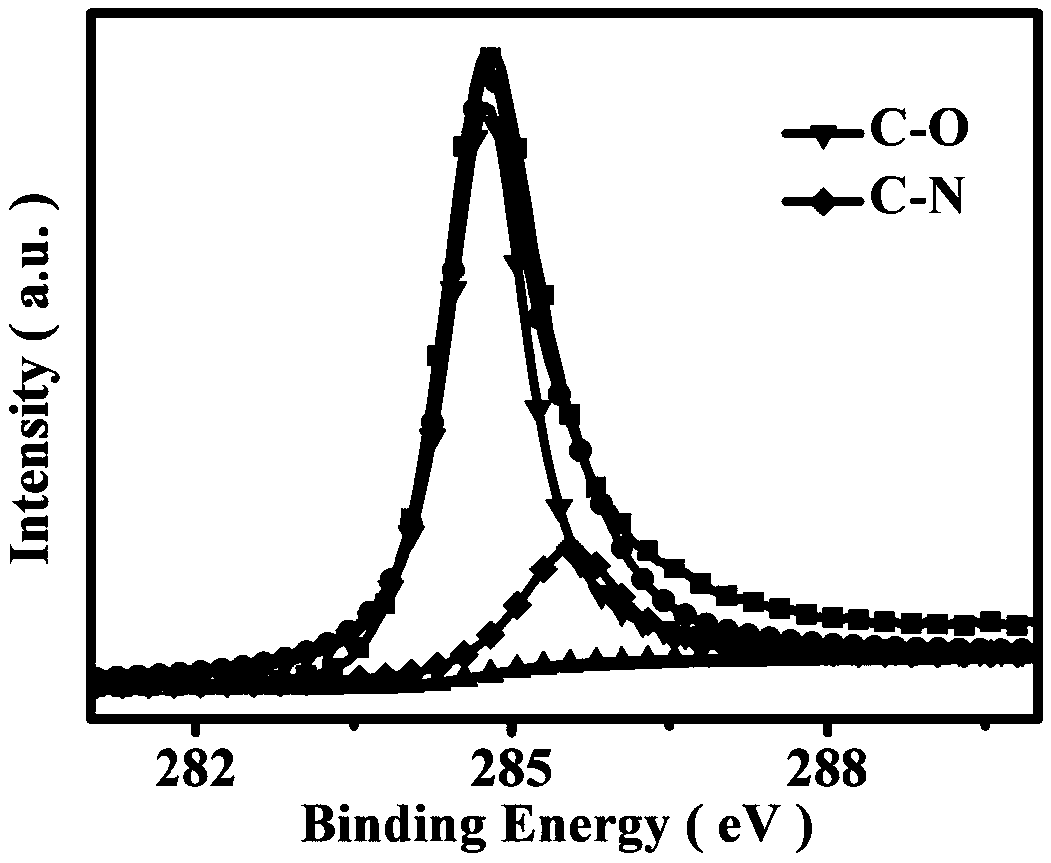Capacitor electrode and preparation method based on nitrogen-sulfur co-doped porous carbon microsphere material
A technology of nitrogen-sulfur co-doping and capacitor electrodes, which is applied in the manufacture of hybrid capacitor electrodes and hybrid/electric double-layer capacitors, etc., can solve the problems of complex synthesis process, inability to meet the practical application requirements of supercapacitors, and high cost, and achieve excellent electrical properties The effect of performance, great application potential and industrial value
- Summary
- Abstract
- Description
- Claims
- Application Information
AI Technical Summary
Problems solved by technology
Method used
Image
Examples
Embodiment 1
[0053] S1: React hexachlorobutadiene, TDEC and acetone in a polytetrafluoroethylene-lined autoclave at 120°C and 1.5MPa for 2 hours, where the concentration of TDEC and hexachlorobutadiene is 6mg / mL, the volume ratio of hexachlorobutadiene to acetone is 1:3.5;
[0054] S2: After the reaction, the pressure was released to normal pressure, and naturally cooled to room temperature, and the obtained solid was dried at 115° C. for 7 hours to obtain a dry sample;
[0055] S3: The dry sample was calcined at a high temperature of 1000°C for 2 hours under the protection of nitrogen to obtain a nitrogen-sulfur co-doped carbon microsphere composite material, which was named L1.
Embodiment 2-3
[0056] Embodiment 2-3: the investigation of high temperature treatment temperature in step S3
[0057] Except that the high-temperature treatment temperature in step S3 was replaced by 900°C and 1100°C respectively, other operations remained unchanged, so that Example 1 was repeated, and thus Examples 2-3 were carried out in sequence, and the obtained composite materials were named as L2 and L3.
[0058] After calculation, when the scan rate is 1mv / s, the electrode capacitance values prepared by L1, L2, and L / 3 are shown in Table 1 below:
[0059] Table 1
[0060]
[0061] It can be seen that in step S3, the temperature selection of the high temperature treatment is very important, and 1000° C. is the optimum temperature, at which time a composite material with optimal properties can be obtained.
Embodiment 4-5
[0062] Embodiment 4-5: the investigation of different solvents in step S1
[0063] Except that the acetone in step S1 was replaced by isopropanol and ethylene glycol, the other operations were unchanged, so that Example 1 was repeated to obtain Examples 4-5, and the obtained materials were named L4 and L5.
PUM
| Property | Measurement | Unit |
|---|---|---|
| specific surface area | aaaaa | aaaaa |
| pore size | aaaaa | aaaaa |
Abstract
Description
Claims
Application Information
 Login to View More
Login to View More - R&D
- Intellectual Property
- Life Sciences
- Materials
- Tech Scout
- Unparalleled Data Quality
- Higher Quality Content
- 60% Fewer Hallucinations
Browse by: Latest US Patents, China's latest patents, Technical Efficacy Thesaurus, Application Domain, Technology Topic, Popular Technical Reports.
© 2025 PatSnap. All rights reserved.Legal|Privacy policy|Modern Slavery Act Transparency Statement|Sitemap|About US| Contact US: help@patsnap.com



